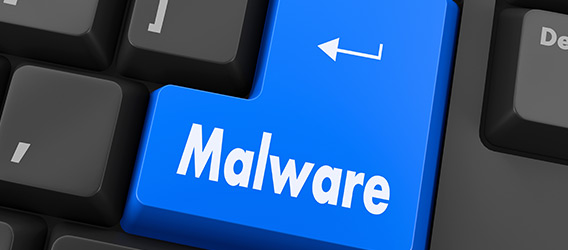Malware: What Happens After MY PC is Infected?
The top challenge to web security, according to the cybersecurity firm Cyren, is the use of multiple devices, which create numerous entry points for malware to enter your life. Our desktops, laptops, tablets and smartphones all present added risk in today’s gadget universe.

The mobility of these devices, plus the too-often unsecured nature of networks at restaurants, coffee shops and airports provides a perfect storm for cybercrime. And the “market,” black as it is, shows it: nearly one million new malware threats are released every day.
Malevolent actors are getting faster and smarter by the second, making it more essential than ever for Windows users to protect their PCs with the best, most up-to-date antivirus software they can find. But what happens when a computer is already infected? To understand how insidiously malware can work, it helps to look at two common types that aren’t even technically viruses: trojans and spyware.
Trojans
Trojans are programs that appear to be useful, but they intentionally run destructive functions. Unlike viruses, trojans are not designed to make copies of themselves and spread to other users, but trojans can carry viruses and other malware within them.
Trojans can come from web downloads or email attachments, and it’s all too easy to be tricked into installing one because it looks like it will serve a beneficial purpose. Trojans can even attach themselves to legitimate apps.
The effects of trojans can range from persistently annoying to permanently devastating. Users have reported everything from the constant display of ads, to the theft of their banking information, to the destruction of every file on their computer.
Spyware
Spyware is tracking software that silently installs itself on your computer, monitors (or even controls) your internet activity, and then sends private information about you back to its creator. Spyware programs are commonly used for annoying, constant targeted advertising but can also be deployed for criminal identity theft. Either way, they compromise privacy and overburden your PC with needlessly running background programs that can grind PC function to a halt.
And consider what can happen beyond performance drain, for example with this new intelligent spyware recently discovered by Cyren, as described in its quarterly threat report:
“JS/IFrame.VJ.gen is a form of spyware launched in August 2015. It is found on compromised WordPress, Drupal, and Joomla pages containing injected JavaScript. The infection starts when a user visits a compromised site. The simplified JavaScript code contains an iframe that redirects to a malicious server location. Additional JavaScript is loaded, which then gathers information such as the operating system, timestamp, timezone, and existence of certain legitimate applications like Adobe Flash Player. The collected information is sent back to the original server and a series of redirects to fake sites follow, that look identical to or closely resemble Flash upgrade sites, Google Chrome plugins, or other fake application sites. Once on these fake sites, the victim is encouraged to download spyware or potentially unwanted applications (PUA) that pretend to be real applications.”
Warning signs
A slow and unstable computer is one of the most common signs of a trojan or spyware infection. If your PC suddenly takes a lot more time to open programs or begins to crash frequently, it may be infected. Other signs include:
- Pop-up windows appearing constantly
- A change to your Chrome, Edge or Firefox homepage
- Frequent website redirects after typing your intended destination into the browser
- New and unwanted toolbars appear in your browser
- New and unwanted icons appear in your PC system tray
What to do
If you think you may have a virus, spyware, worm, keylogger, trojan or other type of malware, consider calling iolo technologies’ Premium Services (iPS) for a consultation with a tech expert. They can personally walk you through effective actions that will diagnose and hopefully remove the threat. This includes even re-installing Windows in the event the worst happens. iPS technicians can:
- Remove destructive or annoying pop-ups, toolbars and plug-ins
- Ferret out hidden malware including spyware and “malvertising”
- Optimize needlessly sluggish internet connections
- Diagnose software conflicts and errors to speed up your PC
- Install or re-install Windows security patches and hardware driver updates
The Toll-free number for iPS in the U.S. and Canada is 1-877-857-9280. It might be worth a chat with a technician to discover where you may be especially vulnerable to malware attacks; it will certainly be worth the call if you suspect you have already been attacked.








